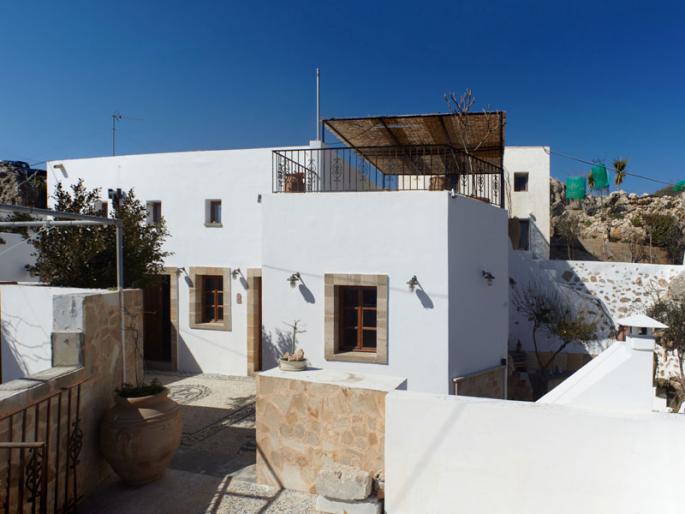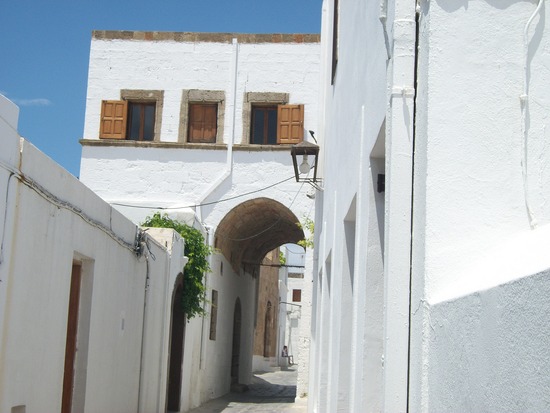L 20 |
Lindos |
type |
|
place |
The ancient Greeks referred to Rhodes, this most beautiful island, as Helios, the Sun god. In about 100 B.C.E., martial Doric tribes occupied it and founded three towns, one of them being Lindos. Thanks to its east-facing orientation, the town soon evolved into a trade centre. Thus, it is no accident that Homer mentions it in The Ilyad as one of the most flourishing towns of the region. After the foundation of Rhodes, the new capital Lindos lost its significance, which in turn allowed its characteristic fabric to grow and evolve organically to the present day. At the foot of the acropolis towering above the bay, a pattern resembling bee-hives is made up of snow-white, cell-like buildings grouped around courtyards. Just like in Algir’s kasbah, the direction of growth and the logic of the pattern are defined by topographical features, streets winding along the slope and the orientation of courtyards allowing in light. The crowded additive system contains steep streets resembling thin cuts. The versatile positioning of the courtyards results from their relation with the street and their internal densification. In some cases, one steps into the courtyard directly from the alleys. Elsewhere, there is access to the sheltered back garden through the house, but more often than not, the courtyard transforms into an atrium at the focus of the building. A palette of light colours, lanes of strict proportions (widening here and there), arbours stretched above the streets and canvasses protect against summer heat.







